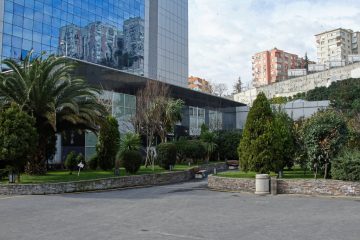Rapidly developing economy; GDP, which was 231 billion USD in 2002, increased more than three times in 2018 and reached 784 billion USD (TURKSTAT)
Stable economic growth; Annual average real GDP increased by 5.5% between 2002 and 2018 (TURKSTAT)
A promising economy (OECD) expected to be one of the fastest growing economies among OECD member countries in 2018-2024, with an average annual real GDP growth rate of 5.5%
The world’s 13th largest economy in 2018 and the 5th largest economy compared to the EU region (GDP, IMF WEO by Purchasing Power Parity)
Institutionalized economy (CBRT) attracting USD 209 billion of FDI in the last 16 years
A dynamic and mature private sector (TURKSTAT) with an export volume of $ 168 billion, up 366% between 2002 and 2018











